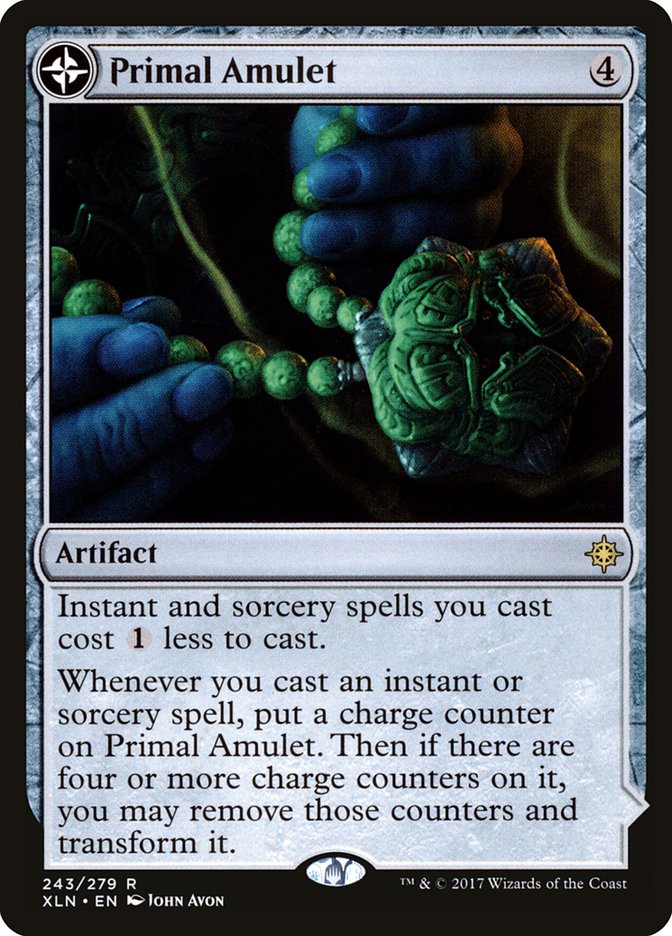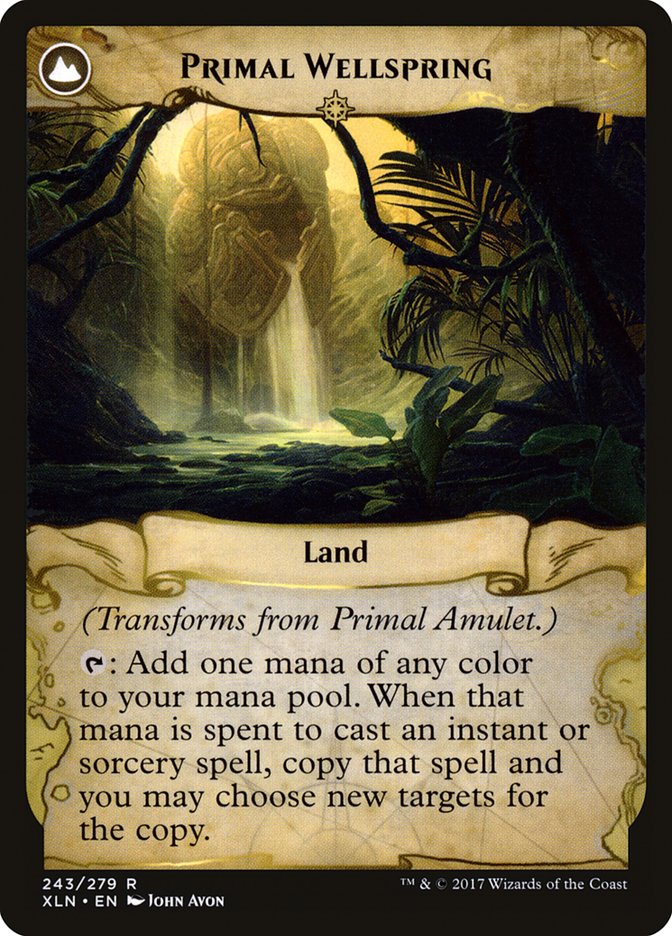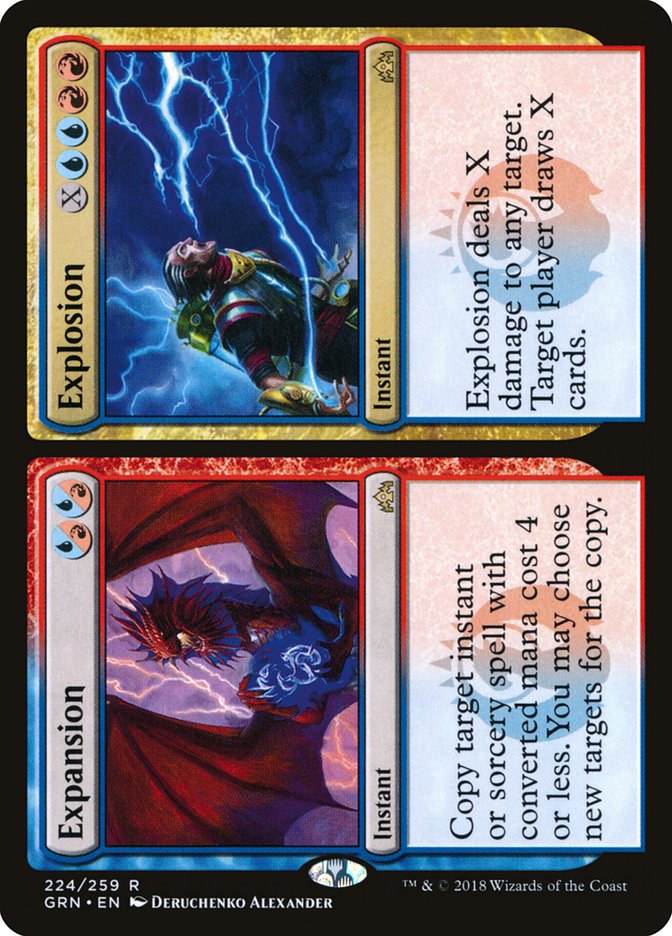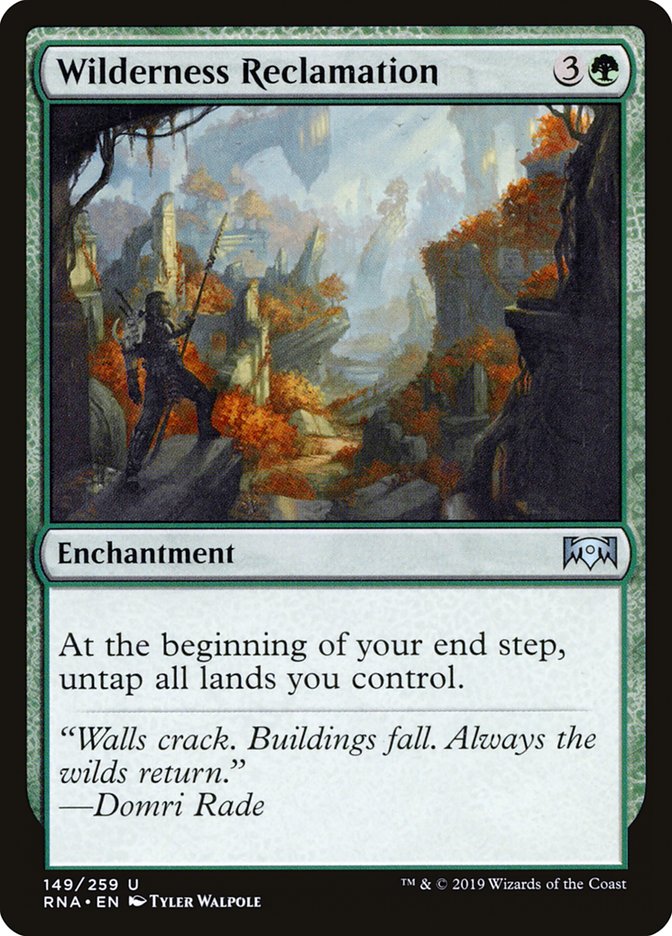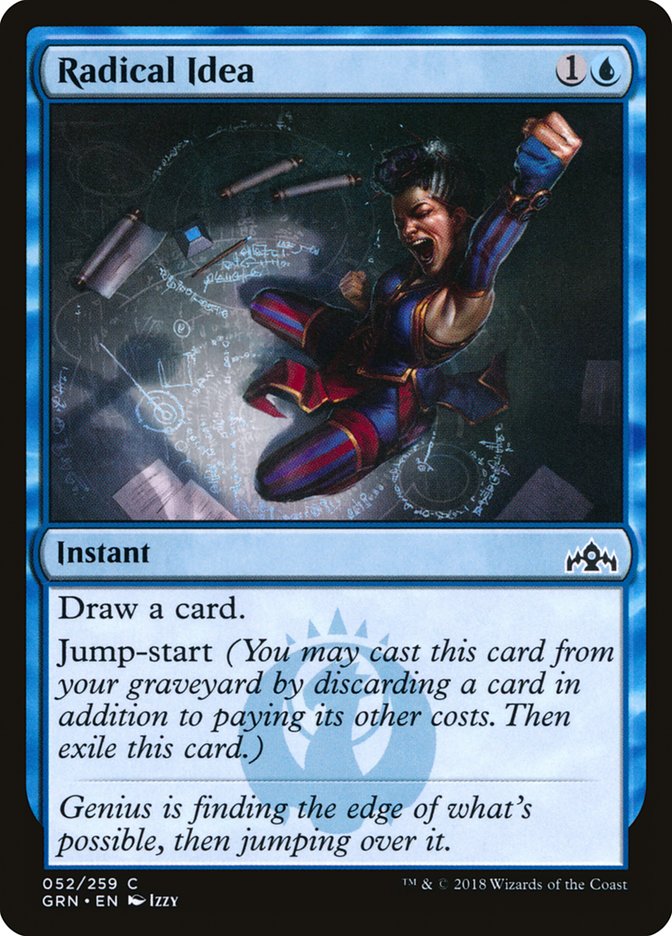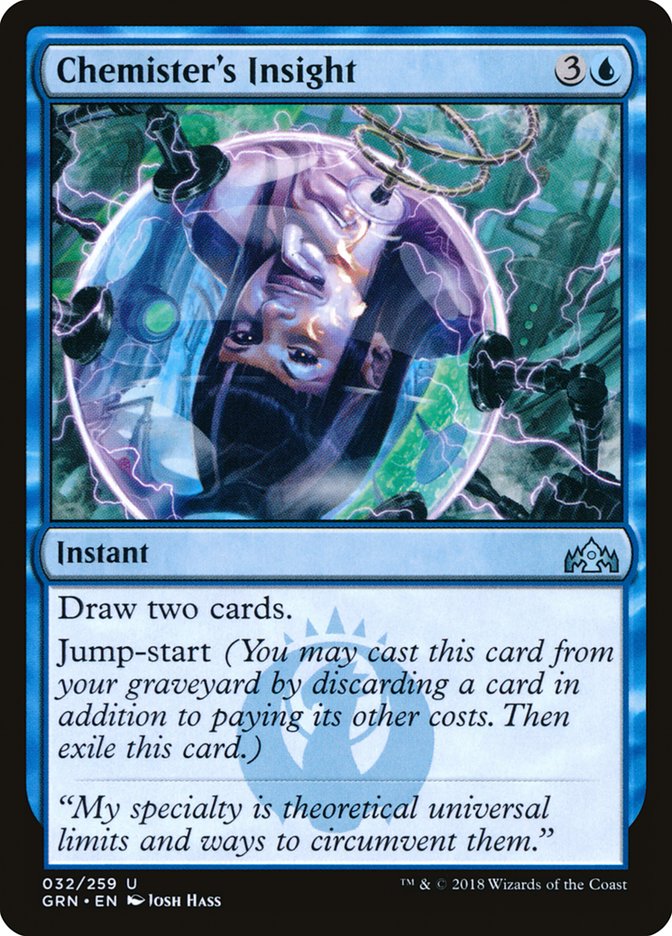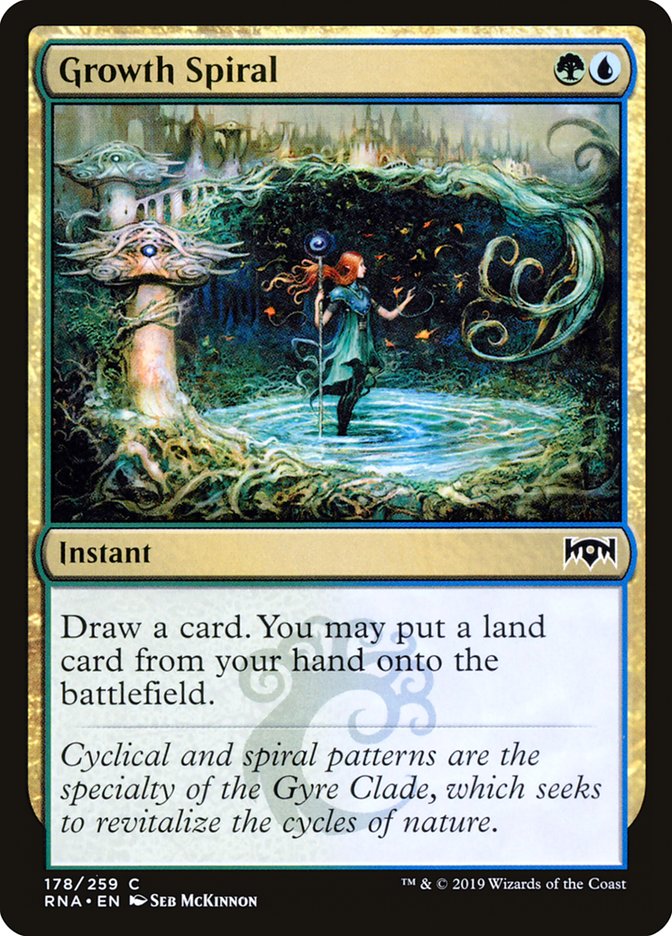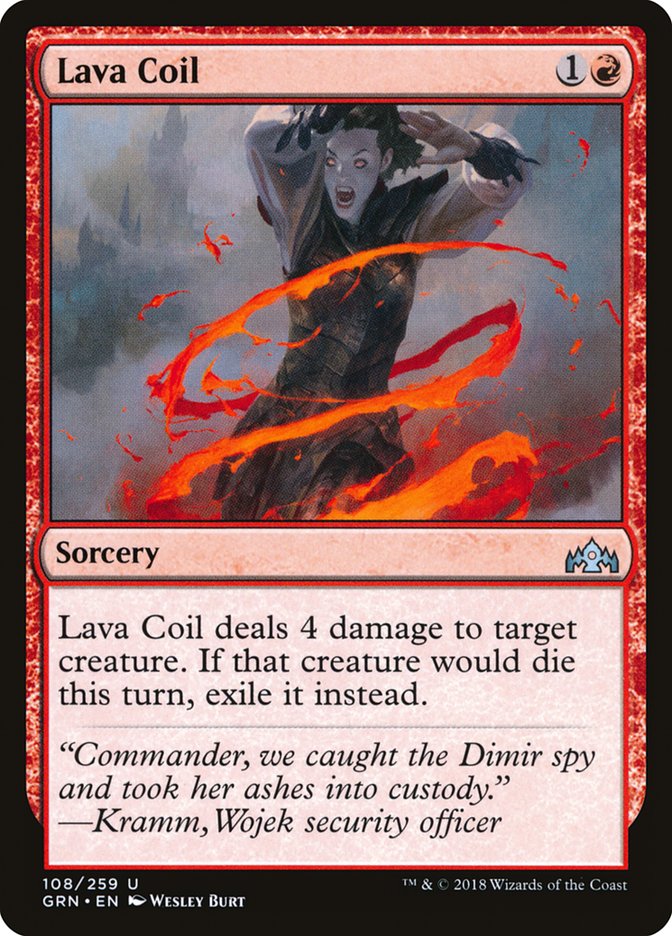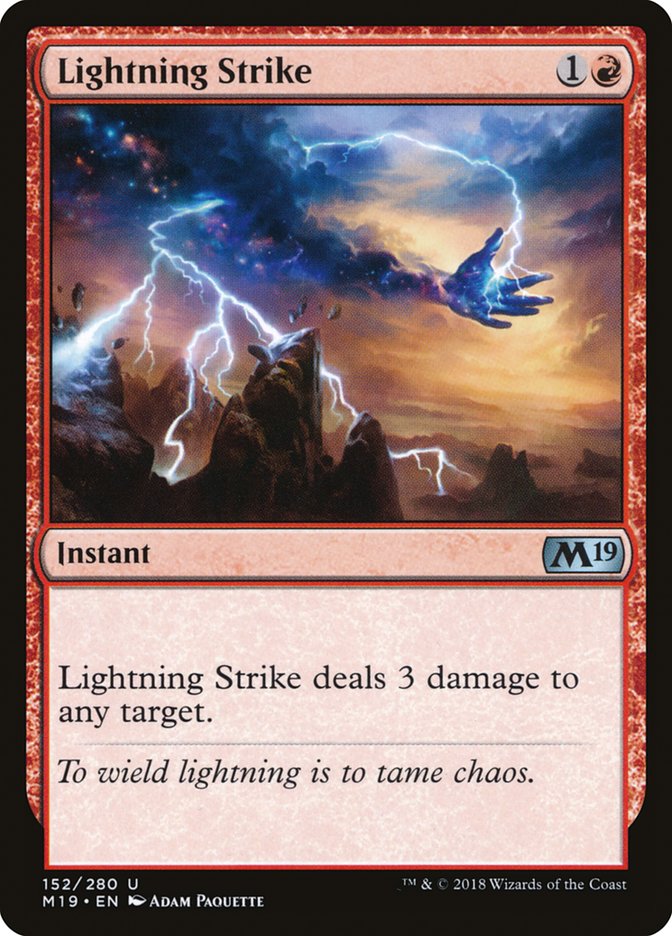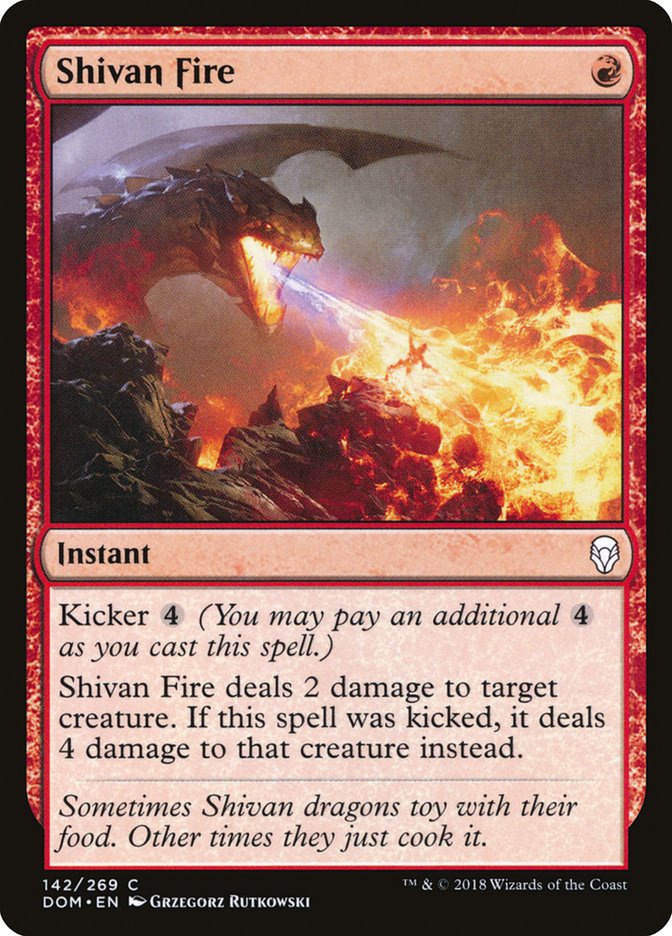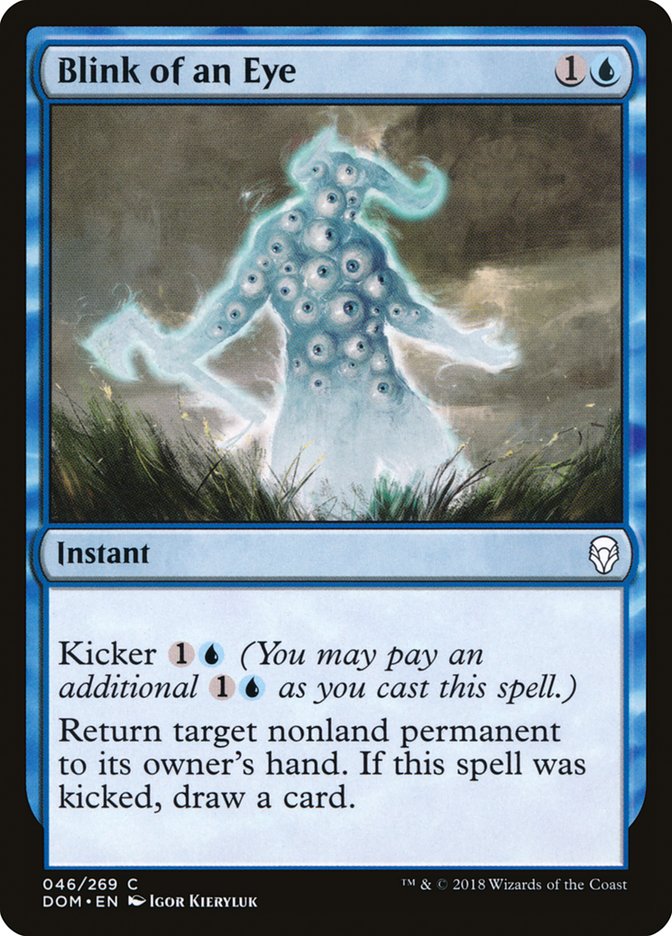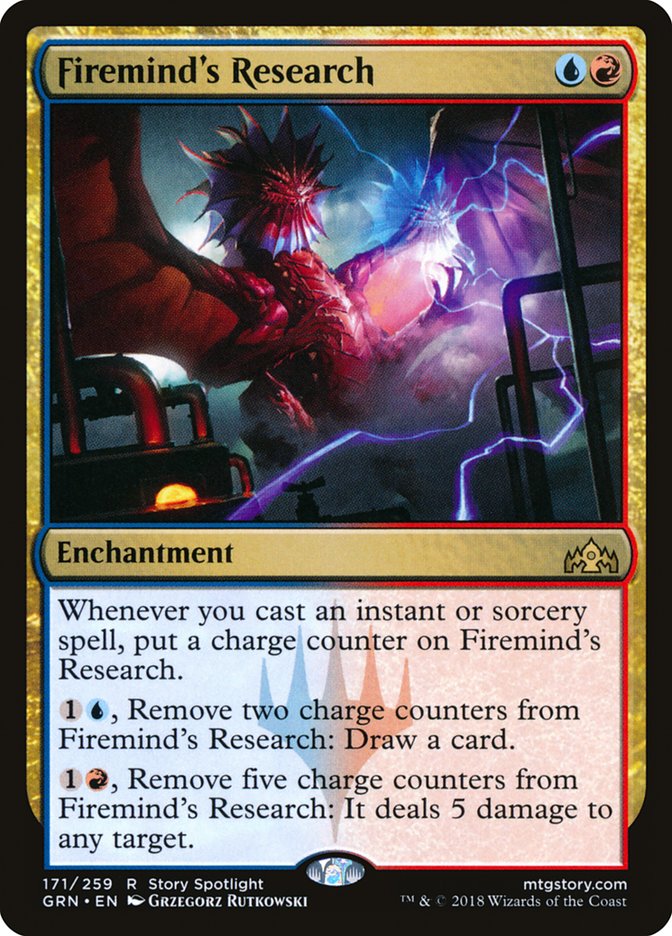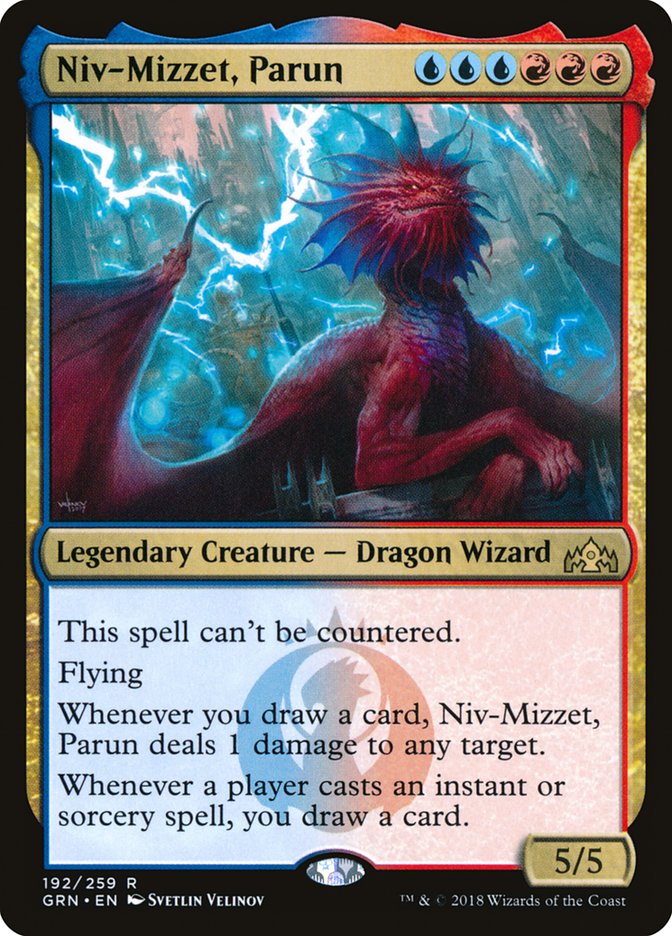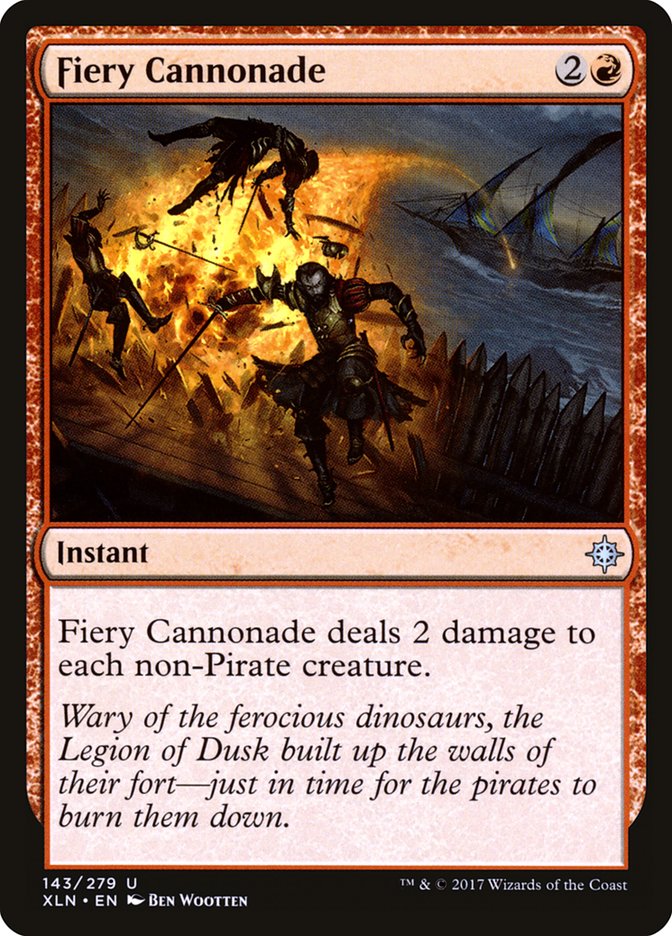This weekend is the first Standard Open in over a year on the SCG Tour, and
I’m not doing commentary. No. I’m battling in this thing, and I’m going to
take home the trophy.
I’ve been saying it for a few weeks now, but Wilderness Reclamation is
stupid, and you would be wise to play it. While virtually no one can agree
on the cards surrounding this giant mana battery, everyone seems to agree
that untapping all your lands every turn is awesome.
Lands (25)
Spells (35)
- 4 Shock
- 4 Opt
- 4 Primal Amulet
- 1 Blink of an Eye
- 3 Shivan Fire
- 4 Radical Idea
- 4 Chemister's Insight
- 4 Expansion
- 3 Growth Spiral
- 4 Wilderness Reclamation
Sideboard

Barring a few cosmetic changes, and maybe a sideboard plan or two, this
will be the deck I’m playing this weekend. So why am I playing my version?
What makes me think it’s the best? Well, for starters, I think Primal
Amulet is a lot better than people give it credit for. When I first cast
Radical Idea with a Primal Amulet on the battlefield, the hair on the back
of my neck went up. It’s so easy to transform!
The Core
Primal Amulet is the reason I’m playing this deck. I’ve tried versions with
just Wilderness Reclamation, and they just haven’t felt remotely as
powerful. Both are engine cards that work well on their own, but when you
combine the two it just becomes something else entirely. Just this past
Tuesday on VS Live!, I killed three creatures on my way to killing Ross on
the sixth turn. In a different game, I was a few points short of lethal
damage, so instead I killed all his creatures and drew sixteen cards, only
to virtually guarantee a kill on the following turn.
Untapping Primal Wellspring with Wilderness Reclamation is quite good. So
good, in fact, that I honestly don’t think I’ll ever be able to go back.
Playing an inferior complimentary engine to Wilderness Reclamation just
feels wrong at this point. If it weren’t so easy to transform Primal
Amulet, I might be more inclined to play Teferi, Hero of Dominaria and
Nexus of Fate, but that stuff just seems trivial in comparison to the
busted stuff I get to do with Primal Amulet.
But let’s get to the real reason why I’m playing Temur over Bant:
What makes this card so unique is that it has applications at nearly every
stage in the game. Early on, you can use Expansion to copy Chemister’s
Insight or win a counterspell war. You can copy a Shock and double up on
removal. As you progress to the sixth and seventh turns of the game, using
Explosion as a removal spell that draws a few cards is exceptional. And
considering you have so many ways to actually draw cards, hitting those
land drops shouldn’t be all that difficult.
But as you progress to the later stages of the game, assembling all your
combo-type interactions, Explosion is the best win condition you can ask
for. Not only is it an instant so it works with Wilderness Reclamation, but
you can use it in large bursts over the course of the game just to kill
some large threats. You don’t need to kill them with the first Explosion. I
learned that a few months back when playing Jeskai Control with four copies
of Expansion//Explosion. The card is quite good, and using both halves at
virtually all stages of the game is what makes this card so unique and so
insanely good with the rest of the strategy.
Once you get to the fifth turn, you can use Wilderness Reclamation plus
Explosion to draw six cards and deal six damage to a target. All that
requires is five lands, Wilderness Reclamation, and Explosion. That’s it.
As I’ve said time and time again, Wilderness Reclamation is an insanely
powerful mana generator, and I believe that Explosion is far and away the
best card to pair with it.
Wanna hear my thoughts on Wilderness Reclamation? This clip
from #SCGWOR
should be a good start!https://t.co/4EXgeKPP4K—
Todd Anderson (@strong_sad) January
13, 2019
This is the one spell in the deck that sings to me. This is the mana
generator that no one asked for, but we’re all going to do our best to
abuse. When I first saw the card, it talked to me. And in all honesty, this
card reminds me of some very disturbing play patterns that have resulted in
bans in the past.
Without Wilderness Reclamation, no one would take this deck seriously. I’d
probably just try to “meme it up” with Primal Amulet because that’s what
I’m always trying to do, but I definitely wouldn’t be playing green. And
while I reiterate the possibility that I’m wrong about Primal Amulet in the
archetype, everything in my being is screaming that Wilderness Reclamation
is just, for lack of a better term, broken.
For weeks, I’ve been talking about this card. I don’t think people are
really getting the message. Sure, some people are putting it into Bant
Nexus, and a few Todd loyalists are putting it to work. Only recently did
Patrick Chapin come out with an article explicitly saying he thinks it
would
warp the format
. But you’ll understand soon enough. But first…
The Utility
This is not a good Magic card. From virtually every angle, I’d rather have
Think Twice. But we are working with what we have, and it’s honestly pretty
cheap. And while Radical Idea is not necessarily a “good card,” it does a
lot of little things very well.
-
Allows you to cycle unwanted spells or lands as the game progresses
-
Each half only costs one mana under Primal Amulet
-
Counts for two spells with Primal Amulet
Like any jump-start spell, Radical Idea is a fine tool alongside Primal
Amulet to help it become exactly what you need it to be: Primal Wellspring.
Without these little role players, Primal Amulet wouldn’t be very good at
all. Trust me, I’ve tried.
A turbo-powered Radical Idea, Chemister’s Insight is double the mana for
double the fun. Not only is it the perfect card to pair with Wilderness
Reclamation, but it also counts as two spells for Primal Amulet. Both
Radical Idea and Chemister’s Insight are what make this deck tick, and
having access to four copies of both is a boon.
When building a new archetype, the first expectation is to push the synergy
to the limit. Play as many powerful instants as you can slot into the deck.
Play a lot of Radical Idea and Chemister’s Insight to help transform Primal
Amulet in a timely fashion. And, in some cases, play ramp spells like
Growth Spiral to play those cards faster. But at some point, you need to
start shaving synergy cards in favor of power cards, interaction, and
protection.
But Growth Spiral feels like a no-brainer, right? Well, I’ve had trouble
slotting this into many of my builds of Wilderness Reclamation for a few
reasons. First off, if you miss your land, two mana to draw a card is
worthless. I’d rather be doing anything else. Second off, ramping is
occasionally just worse than interacting with your opponent on some level.
After all, if you kill their two-drop, that’s essentially the same thing as
ramping because you’re effectively buying yourself another turn. The only
difference is your opponent no longer has that threat on the battlefield,
and instead has a random draw.
Reclamation is quite good. So good, in fact, that I honestly don’t think
I’ll ever be able to go back.
But Growth Spiral is very good in this style of deck. After all, we’re
trying to race to four mana to cast Wilderness Reclamation or Primal
Amulet, and having those extra land drops (as well as instants) is good for
those cards. The only downside is that, if you’re light on lands, drawing a
card like Growth Spiral is so much worse than drawing a removal spell. To
compensate, we’ve added a land.
We’re also only playing three copies of Growth Spiral so that we don’t have
to overload our deck with green colored sources. At the moment, we’re
stretching with twelve, which means we’re not going to have blue and green
mana on the second turn every single game. But we’re going to have it often
enough, and Growth Spiral is still pretty good at later turns of the game.
When you’re trying to make Explosion lethal or progress your Primal Amulet,
any instant that says “draw a card” still has value. Luckily, adding a land
to the battlefield effectively gives you two extra mana with Wilderness
Reclamation.
To have the best of both worlds, I think the correct approach is to exploit
that one extra mana generated by Growth Spiral on the turn you cast it.
In previous versions, I was leaning pretty hard on Lava Coil and, on
occasion, Lightning Strike. Lava Coil was a bust because it was a sorcery,
and I desperately needed some form of interaction on the turn where I cast
Wilderness Reclamation. And ideally, that spell could be paired with
Radical Idea, Opt, or some other form of card draw to help us continue
digging for other combo pieces. That’s where Lightning Strike came in.
Lightning Strike wasn’t actually bad. At no point did I feel like Lightning
Strike was failing to do what I wanted it to do. But Lightning Strike was
occasionally a little slow. There were times in which I just didn’t have
two mana to spend on Lightning Strike to kill a creature. And, on occasion,
I would get overwhelmed by cheap threats from the opponent.
Lightning Strike, and an overall higher curve, also makes Growth Spiral a
bit more difficult to justify. But if you can do something with that extra
mana that Growth Spiral provides on the turn you cast it, it gets easier
and easier to justify.
Shock is one of the better cards in the deck. It helps kill early threats,
slows down your opponents who play Llanowar Elves and Incubation Druid, and
occasionally snipes a Planeswalker that uses the minus ability on one of
your powerful four-drops. So it seems like Shivan Fire should fit into the
deck easily, as it does mostly the same stuff. The upside is that Shivan
Fire gives you a bigger removal spell to pair with Primal Wellspring when
you need to take down two medium-sized creatures. And if you’re flooding a
bit, it can be cast alongside Wilderness Reclamation to pick off something
on the fourth or fifth turn.
Additionally, we’re just adding another one-mana spell to our deck to give
us a bit of breathing room against aggressive strategies. Shock is
fantastic, so it just makes sense that Shivan Fire would be great too. On
top of that, having an additional removal spell to play on the third turn
after casting Growth Spiral is a huge tempo play that just doesn’t exist
when you play Lightning Strike or Lava Coil.
I thought about this one a lot last week, and I’m still convinced it’s
worthwhile in some number. I just think having at least one in your deck
gives you outs to things like Ixalan’s Binding, which can be particularly
annoying. And once you have your engine running, “losing” a card by casting
Blink of an Eye without kicker isn’t a big deal. I’m usually discarding to
hand size at some point after I cast my first Explosion. All you need is
time to get to the end game, and Blink of an Eye helps you do just that.
Once you transform Primal Amulet into Primal Wellspring, every instant and
sorcery gets a little bit better. And modal instants and sorceries are
overpowered. Getting that big bounce effect twice while drawing two cards
is a huge deal and can save you in some spots where you would otherwise be
very dead.
In fact, the more I think about it, the more likely it is that I end up
playing two copies of Blink of an Eye in my final list before the weekend!
The Mana
One thing I’ve been looking for when building three-color decks in this
Standard format is if I can get away with playing fewer dual lands. In
virtually every shell, my goal is to trim one here or two there in order to
play more basic lands. Having too many lands enter the battlefield tapped
or deal you damage can be detrimental to your aggressive matchups or put
you in weird spots when you’re trying to cast two spells in the same turn.
One reason I didn’t play Growth Spiral for so long is because I didn’t want
to play more than ten or eleven sources of green mana. However, adding two
sources of green didn’t affect me all that much, but it’s certainly the
reason why I’m not playing four copies. Drawing multiple early on isn’t a
good thing, and drawing one in the later turns isn’t all that exciting.
Regardless, I’ve settled on the following color totals for the current
spell suite. And while we’re a little heavy on red, it’s very important we
have access to red mana in the first few turns. Plus, as the game goes
long, you need double red for Explosion, as well as triple red for
Niv-Mizzet, Parun after sideboard!
Blue sources:
17
Red sources:
16
Green sources:
12
I’ve also decided that I don’t want more than ten total shocklands in order
to protect my life total. As a result, I wanted to shave on the checklands
as well. In many three-color builds I’ve put together, I’ve gone ten
shocklands and twelve checklands, and been relatively happy. Here, I wanted
a few more basic lands than normal because my deck is effectively two
colors with a very light splash. While I don’t think this manabase is
perfect, I’ve been very happy with it. And the only times I’ve ever really
had mana issues was when I didn’t draw enough lands overall, which I’m
trying to alleviate by playing 25.
Utilizing your Sideboard Correctly
There’s a solid chance that my sideboard ends up being ten cards different
by the time we actually get to the big stage on Saturday. However, this is
the iteration I’m going to try next right after writing this article. I
tested out a bunch of stuff on Tuesday’s episode of VS Live! and learned a
lot about the deck, as well as how to construct and use a sideboard.
In some instances, siding out either Primal Amulet or Wilderness
Reclamation is correct. Against control, having a big mana battery isn’t as
big of a deal as you might think. Plus, if they’re playing Esper, cards
like Mortify are pretty annoying. Regardless, Wilderness Reclamation is the
card that makes the deck run smoothly, but everything tends to slow down
dramatically after sideboard. Decks get more disruption, and if they strip
you of those key resource dumps for Wilderness Reclamation, or Wilderness
Reclamation itself, your deck can fall apart and get run over by just a few
small creatures.
At the moment, here are the concerns I want to address with the sideboard:
Control
Control decks can be incredibly grindy and have a lot of positive ways to
interact with you both before and after sideboard. I’m looking to go hard
in this style of matchup after sideboard, bringing in virtually every card
except Fiery Cannonade in some cases.
There’s a chance that Firemind’s Research just belongs in the maindeck.
It’s an engine that generates card draw, provides removal, and can act as a
finisher in the right scenario. In a lot of ways, it’s like a cheap version
of Expansion//Explosion that takes a lot more mana over time. But with
Wilderness Reclamation, casting it early means you’ll have the extra mana
to power it up. But one thing you get with Firemind’s Research over
Explosion is multiple uses of the “deal five,” which can be your primary
way to contain larger threats.
I think Firemind’s Research is the perfect anti-control sideboard plan for
this archetype, but obviously it goes a bit better with this next one.
Four copies of Negate. No more questions. This card protects you from
counterspells, discard, Planeswalkers, and even your opponents’ ways to
destroy your engine. Negate is the best sideboard card to have against
control, where the only ways they interact with you that matter are through
non-creatures. It’s cheap and reliable, and on more than one occasion has
made its way into my Primal Amulet maindeck.
The best sideboard card by a country mile, Niv-Mizzet, Parun gives you an
uncounterable finisher. Chances are your opponent has very few ways to kill
Niv-Mizzet after sideboard, but even if they do, you’ll usually end up with
a card or three for your troubles.
I’ve always said that untapping with Niv-Mizzet is game over. But what
about when you get to untap with it during your end step? Thanks to
Wilderness Reclamation and our deck being full of instants, you’re likely
to draw a ton of cards with Niv-Mizzet before your opponent gets to untap
and try to kill it!
Aggro
Aggro decks, on the other hand, haven’t felt like they’re as much of an
issue as they should be. For combo-style decks like this one, it’s
important for you to be able to interact with cheap threats. This is all in
an effort to buy time to cast your marquee cards and start playing Magic on
a different level. After all, who cares about Experimental Frenzy when
you’re casting Explosion for X=12, forked three times?
And that’s the best part: these aggro decks are trying to outlast removal
by playing Light up the Stage and Experimental Frenzy. All you need to do
is survive the first four turns and you should be fine, because your card
draw engine is much better than theirs. But we still want a little help
against some of these decks that go a bit wider than usual.
I wish I could play something else, but Fiery Cannonade is all we have at
the moment. It isn’t bad, but it just doesn’t kill the things you need it
to kill sometimes. History of Benalia and friends come out of the games
quickly, and sometimes Fiery Cannonade is the only thing that will save
you. In other matchups, all your opponent’s creatures have riot and can
dodge the sweeper if they really want it to.
It’s possible that the sideboard needs a big sweeper like Star of
Extinction, but I haven’t really been loving that. I’ve also seen some
Guildgate-based decks using Gates Ablaze and Circuitous Route. I’m fairly
interested in those, as Wilderness Reclamation helps alleviate the pressure
that Gates cause by having them enter the battlefield tapped.
With that said… Guildgates… Ew…
Midrange
Midrange decks should be a little problematic after sideboard, if only
because they usually have a lot of sideboard cards to hammer you. In this
scenario, you’re probably going to have to treat them like a control
strategy and try to beat them with Niv-Mizzet, Parun. Depending on the
build, there’s a chance you’ll run into a ton of Reclamation Sages, Knight
of Autumns, and the like. On top of that, Negate and Duress can pose big
problems.
The upside is that these decks usually take a while to actually win the
game, giving you some amount of time to reassemble your combo pieces even
if your opponent kills them. Regardless, they’re the most flexible of the
bunch, which means they could come at you a number of ways, and every color
combination is likely to give you a different annoying card to play
against.
#SCGINDY and the Future of Wilderness Reclamation
Wilderness Reclamation is disgusting. We haven’t had a single tournament
using the card, and I can already tell you with confidence that I’m
terrified of it. The first time my opponent played it against me, the
texture of the game changed. At any point, they could float a bunch of mana
and cast Nexus of Fate during their end step. And if I ever tapped out on
their end step, that sequence could result in me never getting a turn ever
again.
In a control deck, you can use Wilderness Reclamation to tap out on your
own turn and still hold up counterspells on your opponent’s turn. And if
your card draw is instant-speed, as well as most of your other spells, it
becomes pretty easy to see why Wilderness Reclamation is disgusting. It
just doubles your mana every turn. And on the turn you cast it, it’s
virtually free.
Is this the best way to abuse Wilderness Reclamation? My heart certainly
wants it to be. Do I think it’ll get a lot more press alongside Nexus of
Fate? Likely, but you’re gonna have to tune in this weekend for #SCGINDY
to see what happens.
Wilderness Reclamation may terrify me, and I’m going to play with it until
they tell me I can’t.


